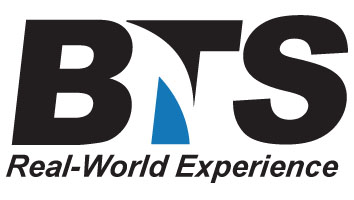| Hands-On Fiber Optic ISP / OSP Combo-Tech Splicing, Termination & Testing |
 |
MODULE I FIBER OPTIC GENERAL STUDIES
INTRODUCTION
Common Industry Terminology
History of Fiber Optics
Advantages/Disadvantages of Fiber Optics
Basics of a Fiber Optic Communications System
Fiber Types and Manufacturing Processes (VIDEO)
Typical Transmission Rates for Voice, Video & Data Applications
System Topologies
Fiber Optic Standards
And More...
THEORY TOPICS
Theory of Light
Electromagnetic Spectrum
Total Internal Reflection (Singlemode)
Refraction (Multimode)
Index of Refraction (Refractive Index)
Light Sources (LEDs & LASERs)
Power
(dbm/watts)
Core/Cladding/Coatings
Numerical Aperture
Macro/Microbends
Wave Division Multiplexing (WDM, CWDM,DWDM, etc.)
Optical Switching Fundamentals
And More...
FIBER TOPICS
Optical Fiber Types
Typical Fiber Specifications
Multimode Optical Fibers
Singlemode Optical Fibers
Dispersion Characteristics
Modal Dispersion
Chromatic Dispersion
And More...
FIBER CABLE TYPES
Outside Plant
Inside Plant
Loose tube Gel Filled (OSP)
Tight Buffered Distribution (ISP)
Tight Buffered Breakout (ISP)
Jumper Cables and Hybrids styles
Reverse Oscillation Locator (OSP)
Fiber Color Code
And More...
MODULE II FIBER OPTIC SAFETY ISSUES
SAFETY FIRST
LASER Safety and Warning labels
Types of LASERs
LASER Output Power Levels
Eye Safety Precautions
Safe Glass Disposal Practices
Food and Drinks Not Safe
Proper Person Cleanliness
Safe Work Surroundings
Confined Spaces Issues
TOOLS:
Cable Jacket
Fiber Coating Strippers
Mid-Entry Tools
Ring Tools
Tube Splitters
Knives
Slitters
Scissors/Snips
Safety Tweezers
And More...
MODULE III FIBER OPTIC CABLE INSTALLATION
PROPER PLANNING
Project Considerations
Cable Pre-testing
Cable Reels Identification and Handling
Proper Cable Pulling Techniques
Outdoor Cable Design Characteristics
Direct Bury Cable Installation
Directional Boring Methods
Buried Cable Depths
Man Holes and Vaults
Cable Pulling Specifications
Tensile Strength and Bend Radius
Avoiding Installation Obstacles
Grounding and Bonding Fiber Cables
Identifying Cable Types
Work Area Protection Issues
And More...
MODULE IV FIBER OPTIC CONNECTORS
Connector Types
Different types
Use of connectors
ST Style Connector Assembly; Hand and/or Machine Polishing and Inspection
SC Style Connector Assembly; Hand and/or Machine Polishing and Inspection
Also Types: FC, LC, MIL-C Series, Biconic, etc.
FIBER OPTIC ENCLOSURES
Applications
Patch Panels
Distribution of Fiber
LAN
Media outlets
Fiber Management Bays
INSTALLING CONNECTORS
Connector tools
Each attendee will install connectors
TESTING CONNECTORS AND JUMPER LOSS
Measure loss of previously installed connectors
Test loss of jumpers
Fiber Testing Parameters
Continuity Testing
MODULE V FIBER OPTIC SPLICING
SPLICING
Mechanical and Fusion Splicing
Fusion Splicer Types and Operations
Precision Cleaver Operation
Set-up Fusion Splicer and Cleaver Work Stations
Practice Fiber Stripping, Cleaning and Cleaving
Practice In-Line Fusion Splicing
Practice Pigtail Fusion Splicing
Qualify Acceptable Splices
and More...
MODULE VI FIBER OPTIC TESTING
TESTING INFORMATION
The dB Scale and Units of Loss
OTDR Functions for Testing
OTDR Testing for Splices, Distances and Back Reflection
OTDR Trace Guidelines
The Dead Zone
Trace Events and Interpretation
Testing at Various Wavelengths
System Loss Parameters
Calculating System Loss
Total System OTDR Testing
Optical Loss Test Sets (OLTS)
Referencing the Test Set First
Measuring Cable System Loss
Documenting Test results
And more...